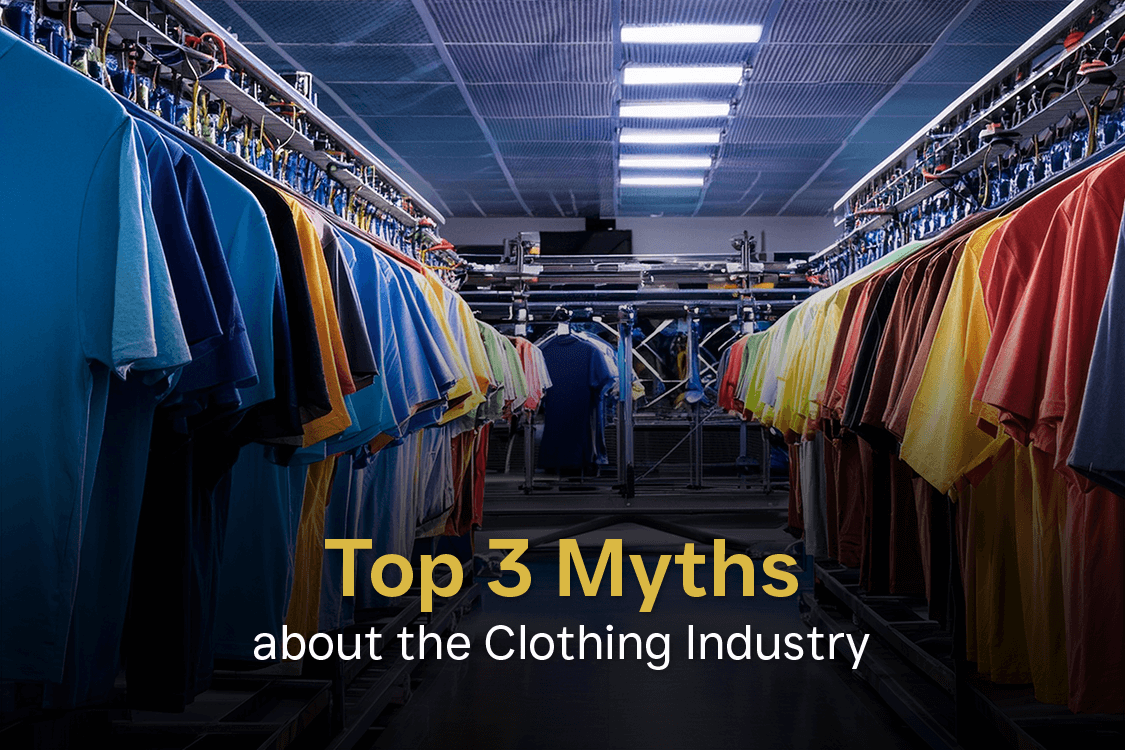
The fashion industry is glamorous, high-speed, and sometimes ill-conceived. Behind shiny magazines and blockbuster runway videos is a sector people believe they know but do not. When myths about the clothing industry are considered, myth vs. reality is staggering. Misinformation is rampant, from how clothes are made to who’s leading the way in trends. And if you’re a company that must grow, you’re counting on these myths to hurt your business.
So let’s set this straight. Below are the apparel industry myths, why they’re myths and what you should know instead.
Swipe through Instagram, and images overwhelm the feed, affordable and disposable. But not exactly.
Yes, there are plenty of photographers around. But not everyone knows how to capture the texture of fabric, move light, or convey emotion through images. That’s why clothing manufacturers still call upon good photographers to promote their collections.
High-quality images sell. The right photo highlights stitching and detail and tells a story. According to Forbes visual content drives 94% more views than text-only content. That statistic alone explains why professional fashion photography is still in demand.
When you’re partnering with branded clothing manufacturers, strong visuals remain essential. Photography isn’t dying; it’s evolving.
It’s simple to view fashion magazines as mere billboards for giant brands and this has been one of the enduring myths about the clothing industry. Advertising, of course, pays the bills. Yet it’s not that straightforward.
Advertising does, indeed, function. But standalone publications, specialized blogs, and internet influencers are turning the system upside down. They find fresh funding models and cover what excites their audiences, not just what sponsors demand.
For clothing manufacturers, this opens new doors. Instead of merely reaching the biggest headlines, brands can reach out to micro-influencers or standalone blogs. These sites are more niche, with more interaction and genuine discussions with readers.
No, not everything is pay-to-play, then. When you’re partnering with these clothing manufacturers, think wider. The fashion voice isn’t just in glossy pages anymore; it’s in TikTok reels, Substack newsletters, and grassroots blogs that influence buyers daily.
We’ve all heard the complaint: “Nothing is real; everything in fashion is airbrushed.” While editing exists, this myth overlooks one truth: models are often as striking in person as they are in photos.
Why? Because it’s cheaper to cast pro models who already look the part than to make someone perfect later on the computer. Retouching is being done, but it usually involves adjusting lighting, color correction, or minor details, rather than completely transforming someone’s appearance.
To manufacturers of apparel, this is important. Authenticity is what people desire. Too much editing can boomerang, and the product appears fake. A rough, unedited photo of the feel of denim or the softness of cotton is more persuasive than a too-perfect beauty shot.
Transparency is a marketing advantage when linking with branded apparel manufacturers. Brands that show real fabrics, true fits, and natural diversity are winning consumer trust faster than ever.
Believing myths about the clothing industry can hold your business back. If you don’t think photography has place, you’ll miss the opportunity to communicate visually. If you think media only hear advertisers, you’ll miss mass-market opportunities. If you believe everything is fake, you might undervalue genuine representation.
In short, misinformation creates missed opportunities. For modern clothing manufacturers, clarity is power. And when you’re partnering with branded clothing manufacturers, cutting through these myths helps build stronger relationships and better brand positioning.
The fashion world lives on illusion, but the time has come to debunk myths and disprove misconceptions. By knowing the truth behind myths in the clothing world, you’re already ahead of people who still have the old tale running in their heads.
For each apparel manufacturer, an awareness of these facts is about better advertising choices. And when dealing with partnering branded clothing manufacturers, it’s between being lost in the noise and being heard truthfully.
Fashion is based on fantasy, but business is based on fact. Don’t let myth speak for you; speak for yourself.
1. Why is fashion photography significant today?
Because good photographs generate interest, sales, and narrative in ways that phone cameras cannot.
2. Do magazines only write about advertisers?
Not always. Independent publishers and influencers often cover stories based on passion and audience demand.
3. Is everything in fashion heavily edited?
No. Most edits are light touch-ups. Models and fabrics are chosen for their real-world appeal.
4. How can brands fight myths in the clothing industry?
By prioritizing authenticity, collaborating with reliable clothing manufacturers, and selecting partners who cherish openness.